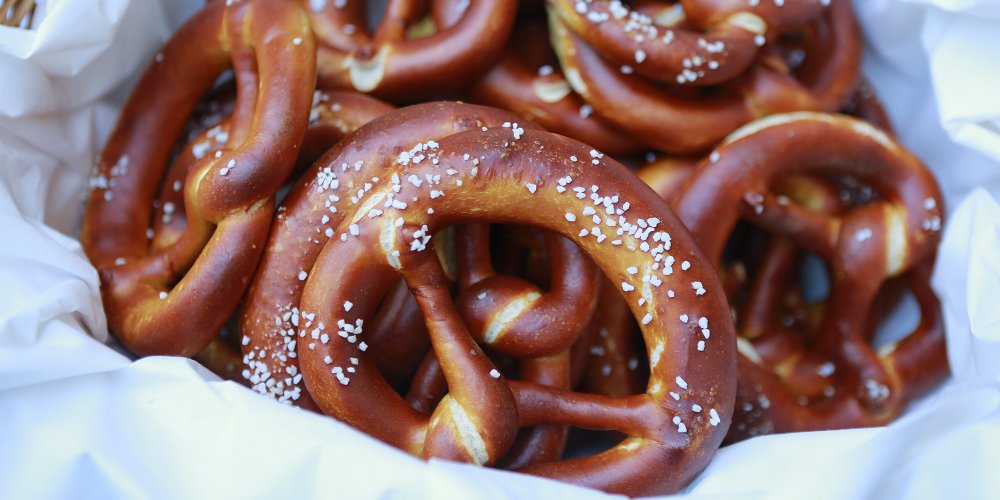This is the pleasure of Christmas markets: eat locally and choose between sauerkraut , mulled wine and gingerbread . Among all the specialties of these markets, we find of course the pretzel, this pastry which Alsace and Germany are fighting for paternity. But where does this delicacy come from?
Many origins that many appropriated
The origin of the pretzel is quite vague, and many claim paternity. One of the legends is that the pretzel is the result of chance. Made in 610 by the baker of the abbey of St. Gall, it was inspired by the monks crossing their arms while waiting for their beers to create the shape of the pretzel.
Another story is that the pretzel was created much later, in 1477, by a baker who committed a small larceny. Condemned by the lord of the castle, his sentence would be forgotten if he succeeded in creating a bread through which one could see the sun shine three times. Desperate, he found the solution by watching his wife pray, arms crossed. Then came the idea of taking his dough, making a circle, then crossing both ends to get the long-awaited bread. The result was greatly appreciated by the count, who decided to pardon the unfortunate baker.
As for the color of the pretzel, it would also be the result of chance. When baking pretzels, a baker's cat, frightened by the heat, dropped the loaves into a bucket filled with brine. It was too late to start a new batch, so the pretzels were put in the oven. Only the baker was surprised by the result of the unfortunate departure.
A version, this time Italian, explains that the pretzel would come from the country of "the boot": precisely, the small village of Brescello would be at the origin of the famous pastry. An Italian baker who immigrated to Colmar after the 30 years war would have liked to honor his village by giving his name to the creation.
Several versions of the pretzel
However, whatever its origin, the main one being the fact that the pretzel has definitely found its audience. If the original bread is based on yeast, flour, butter, water and salt and is therefore salty, its sweet version has also appeared. Very popular, the pretzel is available in many versions ( pretzel in the county , lemon, chocolate ...), including Mauricette, an Alsatian variant that looks like a milk bread but made from pretzel dough, and also in "breads of sils", or Swiss rolls, also based on this famous dough, or the German pastries called laugengebäck.
He is much consumed in Germany, where he is the equivalent of our dear baguette, and in Alsace. He is also very popular in the United States, where he made his appearance at the time of the arrival of German and Swiss migrants in the country of Uncle Sam. In the United States, where the Americans make a big consumption, he was even celebrated on April 26, 2012 in several states.
A bread with multiple meanings
In many areas, the pretzel has many meanings and many traditions surround it. In northern Germany, for example, pretzels from Lübeck and Osnabrück are given to children on local holidays. In Luxembourg, the pretzel intervenes in the love parade. Every year, Luxembourgers celebrate the third Sunday of Lent: bretzelsonnden (pretzel Sunday). When a man wants to woo a woman, he offers him a pretzel on that day. If she wants to be seduced, she offers him a boiled egg in return for Easter. On the contrary, if she refuses, she will give him a basket. In leap years, roles are reversed and it is up to women to offer pretzels.
Highly appreciated for its original shape and softness, the pretzel is also to the tastes of the greatest pastry chefs. Pierre Hermé for example, recognized giving appointments at Crillon, to enjoy delicious pretzels. A dish that this Alsatian origin accompanied by a good beer. If even the greatest pastry craftsmen recognize that this bun has something exceptional, we can only believe them!


